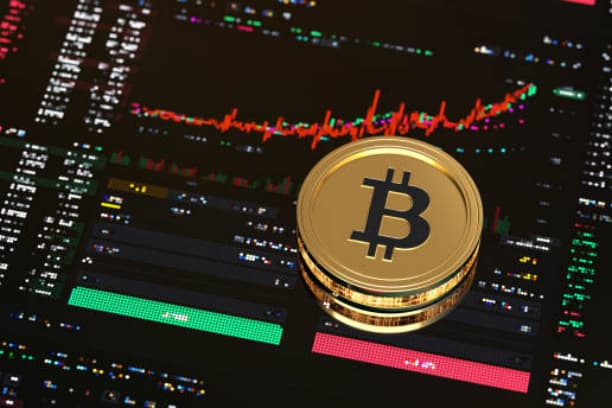What is the difference between passes and virtual coins?
In the world of cryptocurrencies, "passes" and "virtual money" are often compared, but there are actually distinct differences between the two. As cryptocurrency enthusiasts in Taiwan, it is important to understand these differences for investment and trading purposes. Today, we will analyze the differences between pass-through certificates and virtual currencies from different perspectives to help you understand them more clearly and make more informed choices in your future investments.

Virtual Coins: Payment-Centered Digital Assets
Virtual currencies, most commonly represented by Bitcoin and Ethereum. Their primary function is to act as a medium of exchange, allowing users to make digital payments on a decentralized blockchain. Virtual coins are usually issued in limited quantities, like Bitcoin's total of 21 million, which is designed to give it the attribute of "digital gold". The value of virtual coins is generally determined by market supply and demand, meaning that when demand exceeds supply, the price of the coin will rise, and vice versa.
The core feature of virtual currencies such as Bitcoin and Ether is their payment functionality. They are not in essence a specialized application or platform, but merely a tool for transactions and value storage. This makes virtual coins widely available, not only for circulation within the blockchain, but also for purchasing goods or services on major exchanges and from merchants.
Passes: Digital Assets in Blockchain Applications
Unlike virtual coins, tokens are usually digital assets associated with a blockchain platform or application. Not only do they serve as a means of exchanging value, but they also often represent equity in a platform, user rights, or the right to use a product. For example, passes such as the ERC-20 pass on the Ether platform represent assets for a number of different applications, from ICOs (Initial Coin Offerings) to Decentralized Finance (DeFi) products, which issue passes to represent funds or assets.
Passes function differently from virtual coins and usually involve the exchange of rights, functions or services. These passes can be used within specific blockchain ecosystems, and may even be used as investment vehicles for future dividends or value-added opportunities. For example, some decentralized financial (DeFi) platforms have passes where holders may gain governance rights or share in the platform's revenues.
Difference 1: Differences in Issuance and Usage
One of the most fundamental differences between passes and virtual coins is the context in which they are issued and the purpose for which they are used. Virtual coins are usually issued by a founder or development team and have some market circulation. The primary function of these virtual coins is to serve as a payment instrument, and their value comes primarily from market demand. Passes, on the other hand, are usually issued in connection with a specific blockchain application, platform, or service, and have more diverse functions, such as proof of entitlement, governance, or proof of user access to a service.

While Ether ETH can be used to pay for network transactions, DeFi platforms running on Ether may issue their own passes, which can be used as a way to participate in the governance of the platform or to make a profit. In other words, virtual currencies are primarily used as a means of transmitting value, while passes have more layers of functionality within the platform.
Difference 2: Difference in the source of value
The value of virtual currencies is largely determined by market supply and demand. Bitcoin, for example, derives its value from global investors' recognition of its "digital gold" attributes and trust in its limited total volume. As demand for Bitcoin increases from more organizations and individuals, its price will rise accordingly.
In contrast, the value of a pass is more dependent on the actual demand of the blockchain application or platform on which it depends. For example, passes to certain DeFi platforms may rise in value as the platform's activity grows, while passes to certain start-up projects may rise in value due to the success of the project, or plummet due to lack of market acceptance. Therefore, the value of a pass is more dependent on the specific ecosystem and market in which it operates.
Difference 3: Exchange shelving and liquidity
Virtual coins tend to have relatively strong liquidity on exchanges as they usually have high market capitalization and demand. Virtual currencies such as Bitcoin and Ether can be found on almost all major cryptocurrency exchanges around the world, and as a result, these virtual currencies tend to have relatively high trading volumes and liquidity.
The liquidity of a pass depends on the development and popularity of the blockchain platform it belongs to. While passes for some of the more popular DeFi projects may have better liquidity on the exchange, passes for some of the cooler or emerging projects may have poorer liquidity and may face wider spreads or difficulty in trading.
Difference 4: Legal and Regulatory Implications
As the cryptocurrency market grows, so does government policy on the regulation of virtual currencies and passes. Virtual currencies, especially Bitcoin, are often regarded as digital assets or commodities and have gained a clearer legal status in many countries. Many countries have begun to develop tax policies and transaction regulations for virtual currencies.
In contrast, the legal status of pass-through warrants is more complex, particularly those associated with securities, equity or assets, which may be subject to more stringent regulation. In the US, for example, the Securities and Exchange Commission (SEC) has investigated a number of pass-through issues and concluded that certain pass-throughs have securities-like characteristics and are subject to securities laws. Investors should therefore pay particular attention to the possible legal risks involved when purchasing pass-through warrants.
Frequently Asked Questions Q&A
Q1: Are Passes and Virtual Coins interchangeable?
A1: Passes and virtual coins are not directly interchangeable because they have different functions and sources of value. Virtual Coins are mainly used as payment tools, while Passes are mostly used for applications or investments on specific blockchain platforms. If you want to convert Virtual Coins to Passes, you usually need to do it through the corresponding blockchain exchange or platform.
Q2: What is the difference in risk between investing in Virtual Coins and Warrants?
A2: The risks are more immediate as virtual currencies are more volatile in the market and are usually more affected by global macroeconomics. Pass-through certificates, on the other hand, have more risk from the blockchain platform they rely on or the project itself, which may fluctuate significantly due to project failure, regulatory issues or lack of market demand.
Q3: How to choose the right virtual currency or pass for investment?
A3: When choosing a virtual currency, you can refer to the market demand, technical maturity and global recognition. When choosing a pass-through certificate, you need to pay attention to the development potential of the blockchain platform on which the pass-through certificate relies, the practical application scenario and its market liquidity, as well as assessing the risks of the project.














